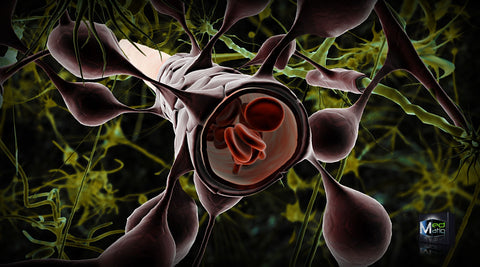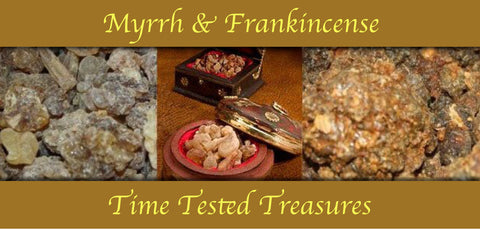Essential Oils, Cancer & The Blood Brain Barrier
THE BLOOD-BRAIN BARRIER
By David Stewart, Ph.D.,R.A.
"It was thought for years that the interstitial tissues of the brain served as a barrier to keep damaging substances from reaching the neurons of the brain and the cerebrospinal fluid. Instead of a barrier, it would be more accurate to consider it as a sieve or filter through which only molecules of a certain size or smaller can pass.
Most of the molecules of the substances used in chemotherapy are too large to pass through the blood-brain filter, which is why doctors say that chemotherapy doesn't work on brain cancer. Some of the smaller molecules get through, but not the whole suite of drugs intended.
Doctors don't know for sure, but it seems that in order to cross the blood-brain barrier, only molecules less than 800-1000 atomic mass units (amu) in molecular weight can get through. Lipid solubility seems to be another factor which facilitates passing through the blood-brain barrier. Water soluble molecules don't usually penetrate into brain tissue, even when very small. The molecules of essential oils are all not only small, but lipid soluble as well.
In fact, when it comes to essential oils, small molecules (less than 500 amu) are what they are made of. That is why they are aromatic. The only way for something to be aromatic is for the molecules to be so small that they readily leap into the air so they can enter our noses and be detected as odor and smell.
That is why oils for cooking or massage, such as corn, peanut, sesame seed, safflower, walnut, almond, canola, olive and other oils pressed from seeds are not aromatic. Sure, they have a smell, but you can't smell them across the room in minutes as one can when you opens a bottle of peppermint, hyssop, or cinnamon oil. Essential oils of every species cross the blood-brain barrier.
This makes them uniquely able to address disease, not only from a physical level, but from a more basic and fundamental level-that of the emotions which are often the root cause of physical illness."
Essential Oil Aromatherapy

It’s quite true that aromatherapy can penetrate deeper into the tissues than many other healing modalities. Because they are inhaled through the nose, essential oils will efficiently pass through the blood brain barrier in the area surrounding the olfactory nerve. This makes them very serious contenders as natural healers for brain injuries , brain tumors and more.
A true blood-brain barrier is 8 cells in thickness. The number of cells which constitute the layer around the olfactory nerve is only 4 to 5 cells thick. Hence, it is very easy for the oils to pass straight through to the brain when breathed in through the nose.
This quality of essential oils is a critical one where it concerns brain injuries. Every injury in the body requires good circulation to enhance healing. Ideal circulation provides plenty of oxygen and nutriments to the injury site as well as removes carbon dioxide, waste products, and toxic residues.
Essential oils that promote circulation, particularly in brain tissue, can greatly accelerate the healing process of injuries in the head. Not only will the deeply penetrating oils increase circulation, some of them have the right chemical constituents that can assist in the repair of injured brain tissue.
A QUICK COURSE IN CHEMISTRY
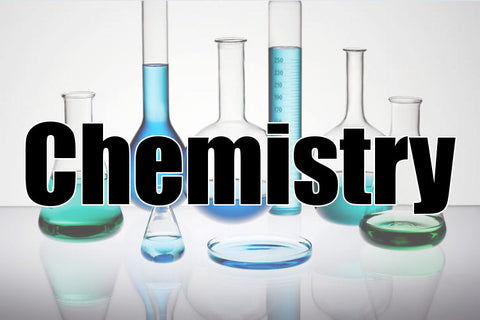
Because of the tiny molecular structure of the components of an essential oil, they are extremely concentrated. One drop contains approximately 40 million-trillion molecules. Numerically that is a 4 with 19 zeros after it: 40,000,000,000,000,000,000. We have 100 trillion cells in our bodies, and that's a lot. But one drop of essential oil contains enough molecules to cover every cell in our bodies with 40,000 molecules. Considering that it only takes one molecule of the right kind to open a receptor site and communicate with the DNA to alter cellular function, you can see why even inhaling a small amount of oil vapor can have profound effects on the body, brain, and emotions. Sometimes too many oil molecules overload the receptor sites, and they freeze up without responding at all, when a smaller amount would have been just right. This is why we say that when using oils, "sometimes less is better." Sometimes more is better, too. Knowing the difference is the art of aromatherapy.
Essential oils are mixtures of dozens, even hundreds, of constituents, all of which are composed of carbon and hydrogen and sometimes oxygen. All essential oils are principally composed of a class of organic compounds built of "isoprene units."
An isoprene unit is a set of five connected carbon atoms with eight hydrogens attached. Their molecular weight is only 68 amu, which is very small, indeed. Molecules built of isoprene units are all classified as "terpenes." Terpenes are what make essential oils unique in the world of natural substances.
PHENYLPROPANOIDS
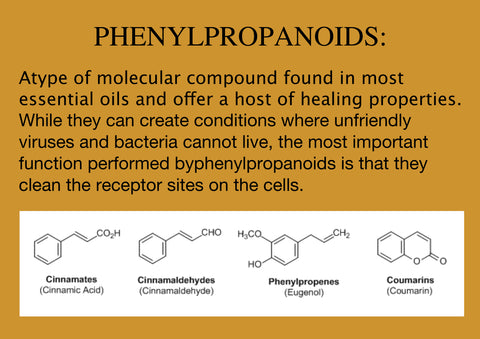 Phenylpropanoids are compounds of carbon-ring molecules incorporating one isoprene unit. They are also called hemiterpenes. There are dozens of varieties of phenylpropanoids.
Phenylpropanoids are compounds of carbon-ring molecules incorporating one isoprene unit. They are also called hemiterpenes. There are dozens of varieties of phenylpropanoids.
They are found in Clove (90%), Cassia (80%), Basil (75%), Cinnamon (73%), Oregano (60%), Anise (50%), Peppermint (25%). While they can create conditions where unfriendly viruses and bacteria cannot live, the most important function performed by phenylpropanoids is that they clean the receptor sites on the cells. Without clean receptor sites, cells cannot communicate, and the body malfunctions, resulting in sickness.
MONOTERPENES
Monterpenes are compounds of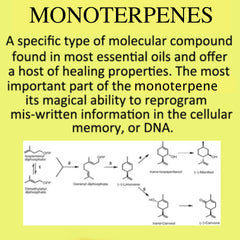 two isoprene units, which is ten carbon atoms and sixteen hydrogen atoms per molecule- molecular weight 136 amu. There are an estimated 2,000 varieties of monoterpenes. Monoterpenes are found in most essential oils: Galbanum (80%), Angelica (73%), Hyssop (70%), Rose of Sharon (54%), Peppermint (45%), Juniper (42%), Frankincense (40%), Spruce (38%), Pine (30%), Cypress (28%), and Myrtle (25%).
two isoprene units, which is ten carbon atoms and sixteen hydrogen atoms per molecule- molecular weight 136 amu. There are an estimated 2,000 varieties of monoterpenes. Monoterpenes are found in most essential oils: Galbanum (80%), Angelica (73%), Hyssop (70%), Rose of Sharon (54%), Peppermint (45%), Juniper (42%), Frankincense (40%), Spruce (38%), Pine (30%), Cypress (28%), and Myrtle (25%).
While offering a variety of healing properties, the most important ability of the monoterpenes is that they can reprogram miswritten information in the cellular memory. With improper coding in the DNA, cells malfunction and diseases result, including lethal ones such as cancer.
SESQUITERPENES
 Sesquiterpenes are compounds of three isoprene units, which is fifteen carbons and twenty-four hydrogens per molecule- molecular weight 204 amu. There are more than 10,000 kinds of sesquiterpenes. Sesquiterpenes are the principal constituents of Cedarwood (98%), Vetiver (97%), Spikenard (93%), Sandalwood (Aloes) 90%, Black Pepper (74%), Patchouli (71%), Myrrh (62%), and Ginger (59%). They are also found in Galbanum, Onycha, and Frankincense (8%).
Sesquiterpenes are compounds of three isoprene units, which is fifteen carbons and twenty-four hydrogens per molecule- molecular weight 204 amu. There are more than 10,000 kinds of sesquiterpenes. Sesquiterpenes are the principal constituents of Cedarwood (98%), Vetiver (97%), Spikenard (93%), Sandalwood (Aloes) 90%, Black Pepper (74%), Patchouli (71%), Myrrh (62%), and Ginger (59%). They are also found in Galbanum, Onycha, and Frankincense (8%).
Sesquiterpene molecules deliver oxygen molecules to cells, like hemoglobin does in the blood. Sesquiterpenes can also erase or deprogram miswritten codes in the DNA. Sesquiterpenes are thought to be especially effective in fighting cancer because the root problem with a cancer cell is that it contains misinformation, and sesquiterpenes can erase that garbled information. At the same time the oxygen carried by sesquiterpene molecules creates an environment where cancer cells can't reproduce. Hence, sesquiterpenes deliver cancer cells a double punch-onethat disables their coded misbehavior and a second that stops their growth.
The American Medical Association (AMA) has said that if they could find an agent that would pass the blood-brain barrier, they would be able to find cures for ailments such as Lou Gehrig's disease, multiple sclerosis, Alzheimer's disease, and Parkinson's disease. Such agents already exist and have been available since Biblical times. The agents, of course, are essential oils-particularly those containing the brain oxygenating molecules of sesquiterpenes.
THE TRIPLE WHAMMY
The big triple punch combination of "PMS" (Phenylpropanoids, Monoterpenes, and Sesquiterpenes) found in essential oils is very powerful in addressing many illnesses, injuries, and disease conditions. That is because this combination offers the following:
First, you clean the receptor sites allowing the proper transfer of hormones, peptides, neurotransmitters, steroids, and other intracellular messengers. (The Phenylpropanoids do that.)
Second, you deprogram or erase the wrong information from cellular memory stored in the DNA. (The Sesquiterpenes take care of that.)
Third, you reprogram the cells with the correct information so they can function properly. (The Monoterpenes do this.)
These three classes of chemical components are why essential oils can sometimes affect a healing that is nearly instant and also permanent. What they simply do is to restore the body back to its natural state of balance and health. While a specific oil may have one or two of these three classes of compounds as its predominant chemistry, all the Biblical oils contain some of all of them. This is one secret to their amazing healing abilities.
So there you have it in a nutshell: The way the blood-brain barrier works and the biochemistry of one of the ways essential oils can help achieve a healing.
The Essential Oil of Frankincense
If there is one essential oil that is particularly well indicated for brain injuries, it is frankincense. Frankincense has a number of unique qualities that make it exceptionally potent in the treatment of specific types of brain damage. For instance, it has the capacity to increase the oxygenation of the blood going to the brain which will in turn help with the absorption of oxygen.
What’s more, Frankincense possesses other key properties that work on critical centers in the brain which facilitate subtle types of healing. When properly potentiated, this versatile essential oil affects the glandular system which can be crucial to deep and permanent healing.
What distinguishes frankincense as a powerful curative agent is its unique mix of terpenes. The terpenes found in essential oils are aromatic hydrocarbons, some of which have a protective function. When found in nature, conifers which emit these terpenes do so to deter herbivores, as well as to attract the predators and parasites of those same animals.
Frankincense has a composition of 8% sesquiterpenes and 78% monoterpenes. It is the sesquiterpenes that are particularly effective in the remediation of hard-to-heal brain injuries. Their capability to penetrate deeply into the brain tissues has been valued by systems of healing since ancient times.
“Frankincense has a molecular makeup that includes sesquiterpenes, that is able to cross the blood/brain barrier. These sesquiterpenes stimulate the limbic system of the brain and other glands within the brain, promoting memory and releasing emotions. Frankincense slows down and deepens the breath.”
Conclusion
Essential oils have been used to promote robust health since time immemorial. Because of the evolutionary development of the human olfactory nerve, it is especially receptive to being stimulated in ways that can trigger deep healing that endures. For this reason these highly efficacious oils have been much valued by societies and civilizations throughout antiquity.
The aromatic resin Frankincense, in particular, has been quite purposefully used in incense and perfumes for millennia. When used in religious ceremony, it was recognized for its detoxifying and clearing effects on the body and mind, heart, and soul.
After all, who has not heard of “gold, frankincense and myrrh”?
REFERENCES:
http://www.rnoel.50megs.com/pdf/theblood.htm
http://www.oilhealer.com/bloodbrain.cfm
http://naturalsociety.com/the-essential-oils-that-can-naturally-help-heal-brain-injuries/

